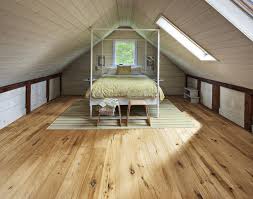
Selecting the Right Wooden Floor for Your Lifestyle
Choosing the perfect wooden floor (drevená podlaha) to your house can completely transform the room, adding the warmth and character. However, the decision involves more than just aesthetics. it is a careful assessment of your lifestyle, requirements, and preferences. This guide will guide you to choose the ideal wooden floor for your lifestyle.
1. Understand Wood Types
Wooden floors come in various kinds, including softwood and hardwood. Hardwood, like oak and maple as well as cherry, is long-lasting and suitable for high-traffic areas. Softwoods like pine and fir are softer and may dent more easily, making them better suited for low-traffic areas. Each kind has its own distinct characteristics, and knowing these will help you choose the most suitable one for your needs.
2. Consider Wood Finishes
The finish on the wood can impact its durability and maintenance. There are two main types: oil-based and polyurethane finishes. Oil-based finishes penetrate wood, enhancing its natural appearance, but require regular maintenance. Polyurethane finishes provide an outer layer of protection on top of the wood, providing greater durability and ease of cleaning. Pick a finish that works with your preferences for maintenance and lifestyle needs.
3. Evaluate Traffic Levels
High-traffic areas like hallways, kitchens, and living rooms require more durable wood. Hardwoods like oak or hickory work well in these types of spaces because of their resistance to wear and wear and tear. For rooms with less traffic or that are not used often, soft woods or engineered wood could suffice. Check the activity level within each room to determine the best wood species.
4. Climate Considerations
The climate of your area can affect wooden floors. If you live in humid areas, wooden floors will shrink and expand, which is why you should choose wooden flooring or moisture-resistant finishes. If it’s dry, the wood could shrink, so think about a finish that accommodates this shift. Make sure that the finish you choose is compatible with your home’s climate to prevent any problems.
5. Maintenance and Upkeep
Wooden floors require regular maintenance to keep their beautiful. Certain woods are more prone to dents and scratches which is why if you have pets or children, choose an extra robust finish or type of wood. Regular vacuuming, cleaning, and occasional refinishing are essential to keep the floors in good condition.
6. Aesthetic Preferences
The appearance of wooden flooring can be varied. Consider the color, grain pattern and texture that will best match your home’s style. The lighter woods such as ash or maple provide a bright, airy feel, while darker woods such as walnut or mahogany add richness and warmth. Pick a style that matches your decor and personal taste.
7. Budget Considerations
Wooden floors come in a variety of prices. Solid hardwood is typically more expensive than laminated or engineered wood. Factor in both the initial cost as well as the long-term maintenance costs when determining your budget. A flooring that is of high quality could improve durability and appearance in the long run.
Making the best choice for your wooden floor involves balancing aesthetics, functionality, and maintenance. If you know the various types of wood, their finishes, as well as your personal preferences, you can make an informed choice that enhances your home’s aesthetic and complements your preferences.